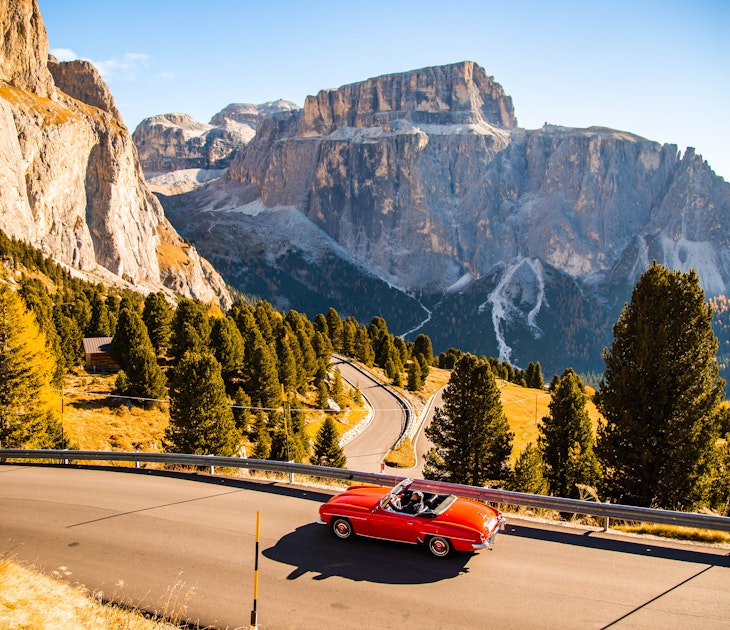
Venice’s dry canals: what travelers can expect when visiting this year

Feb 28, 2023 • 4 min read

A dry canal at low tide in February in Venice, Italy © Alessandro Bremec/NurPhoto via Getty Images
If you’ve seen photos of Venice over the past few weeks, there’s one thing you won’t have missed: the half-dry canals, containing more mud than water.
It’s the result of bassa marea, or low tide – although in Venice that means something rather different to what you might think of. Also known as acqua bassa, or low water, the term is used when water levels in the lagoon city are more than 50cm (20in) lower than average. Last week, levels reached a low of -70cm (28in below average).
- placement: fullWidth
- path: articles/in-content-top
- possible size: [970, 250], [970, 90], [728, 90], [300, 250], [320, 50], [1, 1],
- targeting:
{ "url": "venice-dry-canal-visitors", "destination": "Venice", "continent": "Europe", "country": "Italy", "city": "Venice" }
So what’s going on, and how will it affect your trip to Venice? Here’s everything you need to know.
What’s drying up the canals?
We’ve all heard of acqua alta – Venice’s “high water” flooding. That happens when an abnormally high tide combines with low air pressure. Bassa marea is the opposite – an abnormally low tide meeting high air pressure. And Italy has had almost a month of high pressure.
While many have attempted to draw a link between the dry canals and climate change, it’s not directly the case at this time, according to Dr Warren Cairns, a senior environmental scientist at Venice’s CNR Institute for Polar Sciences.
“It’s hard to link this particular event to climate change – it’s to do with low lunar tide and high pressure over Italy,” he explains.
Where climate change does come in, is that a long period of high pressure over Italy is currently causing a drought — droughts are being seen around Europe and causing concern in numerous regions. In the case of Venice's canals: “[the high pressure has] been over us for so long that it eventually coincided with a low lunar tide, causing the exceptionally low water,” says Cairns.
- placement: fullWidth
- path: articles/in-content-middle
- possible size: [970, 250], [970, 90], [728, 90], [300, 250], [320, 50], [1, 1],
- targeting:
{ "url": "venice-dry-canal-visitors", "destination": "Venice", "continent": "Europe", "country": "Italy", "city": "Venice" }
When the tides are low, the water level drops in the canals – revealing the mud and dirt that coats them. It’s not pretty, but it is natural.

How long is this expected to last – and will it happen again this year?
In the last few days, the situation has started improving. Over the weekend, water levels were edging towards normal, though they’re set to decrease again later in the week.
The good news is it’s unlikely to return in 2023. Bassa marea is a typical winter phenomenon, usually occurring in January and February. Normally it only lasts a few days; it’s only thanks to that high-pressure area hanging over Italy that it has lasted several weeks this time.
And while climate change is sparking drought in Italy, the canals of Venice are usually full. Even last summer, when Italy’s lakes and rivers were visibly drying up, Venice looked the same as ever.
Can I still take a gondola ride?
Yes, though there are a couple of things to bear in mind if you want to see more water and less mud. Avoid taking a gondola for a couple of hours either side of low tide – the closer you are to high tide, the more water will be in the canals. The hi!tide Venice app tracks the water levels.
If it’s a very low tide, you’ll get a better (and more photogenic) experience in a gondola on the Grand Canal, rather than the tiny offshoot canals, where the water-level fluctuation is more pronounced. Conversely, on a regular day, those small canals are more atmospheric than the busy Grand Canal.
Is there another iconic Venice experience I can have that doesn't involve canals?
Plenty – our list of the best things to do in Venice does not include a gondola ride. Leaving aside the museums and galleries, there are other ways to experience the city on water, too. Take a vaporetto (waterbus) to one of Venice’s outer islands: Murano is world-famous for its glass, and Burano is the gateway to the wild north lagoon. Or take the vaporetto to the beach at the Lido.
How else might it affect my trip?
When the water gets exceptionally low – 60cm below average – a handful of vaporetti are diverted down the Grand Canal. Transportation company ACTV sends out alerts via the Telegram app. If smaller canals are closed to traffic, that could also affect your water-taxi ride.
But there’s a positive to the low water levels: they expose otherwise hidden details of the city – like the carved lion heads around the base of the Bauer Hotel, near Piazza San Marco.

What about flooding – when is that a risk?
Venice is of course better known for its flooding than for dry canals. The season for acqua alta typically runs from October to March – yet since October 2020, it hasn’t really been a problem, thanks to the installation of flood barriers. The only place where you may see flooding still is Piazza San Marco.
Venice’s iconic waterfront square is one of the lowest areas of the city, and it starts flooding well before the flood barriers are activated. When that happens, simply buy a pair of disposable boots (or stivali) from the stall-holders in the square – and remember, like bassa marea, acqua alta only lasts for a couple of hours, twice a day.
- placement: fullWidth
- path: articles/bottom
- possible size: [970, 250], [970, 90], [728, 90], [300, 250], [320, 50], [1, 1],
- targeting:
{ "url": "venice-dry-canal-visitors", "destination": "Venice", "continent": "Europe", "country": "Italy", "city": "Venice" }
Explore related stories









